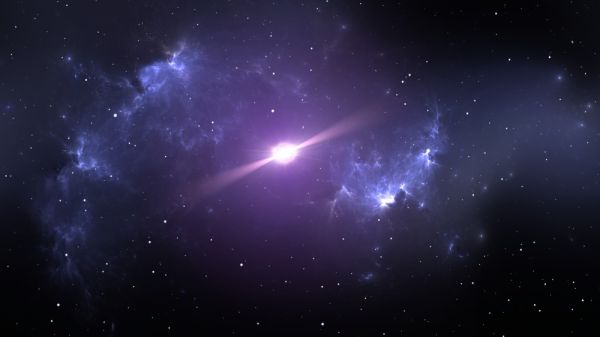Possible massive 'kilonova' explosion creates an epic afterglow
Two hyper-dense neutron stars potentially merged to create the event.
Astronomers may have spotted the afterglow from an epic cosmic event known as a "kilonova."
Kilonovas occur after the collision of two hyper-dense neutron stars, which are the remnants of stars that have died in supernova explosions. Astronomers think they have spotted an afterglow in X-rays from the event, which is dubbed GW170817.
The discovery team suggests that as the debris expanded out from the collision, the resulting sonic-boom-like shock heated up surrounding materials. The heating generated X-rays.
Related: Scientists spot a 'kilonova' flash so bright they can barely explain it
Alternatively, however, a similar effect may be produced due to materials falling towards a black hole caused by the neutron star merger, so astronomers caution the finding is tentative. Either type of find, however, would be the first known to science.
"We have entered uncharted territory here in studying the aftermath of a neutron star merger," lead researcher Aprajita Hajela, an astrophysics graduate student at Northwestern University, said in a statement. "We are looking at something new and extraordinary for the very first time. This gives us an opportunity to study and understand new physical processes, which have not before been observed."
The neutron star event was already known to science, following an Aug. 17, 2017 merger that produced the first-ever detection of such an event by gravitational waves, or ripples of space-time. Astronomers continue to study the region to find out how the area is evolving.
Breaking space news, the latest updates on rocket launches, skywatching events and more!
Astronomers spotted X-ray emissions soon after the event, using NASA's Chandra X-ray Observatory, but the emission began to fade in early 2018. Hajela's team, however, showed the decline in brightness stopped in 2020, with the X-ray emission remaining nearly constant.
The consistency in X-ray brightness was what pointed to this being an unusual event, team members said. "A completely different source of X-rays appears to be needed to explain what we’re seeing," Raffaella Margutti, an astrophysicist at the University of California at Berkeley and a senior author of the study, said in the same statement.
Figuring out what the ultimate cause was, however, will require more follow-up study. If it is indeed a kilonova, the researchers expect to see the X-ray and radio emissions get brighter as the shock continues to plow through the nearby environment. But if it is a black hole, the output should decline or remain steady.
A study based on the research was published Monday (Feb. 28) in The Astrophysical Journal Letters.
Follow Elizabeth Howell on Twitter @howellspace. Follow us on Twitter @Spacedotcom or Facebook.

Elizabeth Howell (she/her), Ph.D., was a staff writer in the spaceflight channel between 2022 and 2024 specializing in Canadian space news. She was contributing writer for Space.com for 10 years from 2012 to 2024. Elizabeth's reporting includes multiple exclusives with the White House, leading world coverage about a lost-and-found space tomato on the International Space Station, witnessing five human spaceflight launches on two continents, flying parabolic, working inside a spacesuit, and participating in a simulated Mars mission. Her latest book, "Why Am I Taller?" (ECW Press, 2022) is co-written with astronaut Dave Williams.


